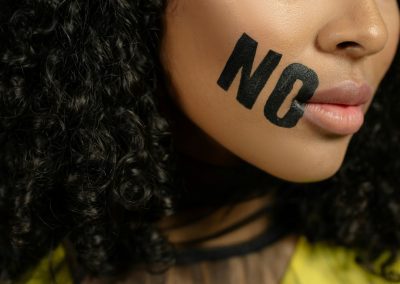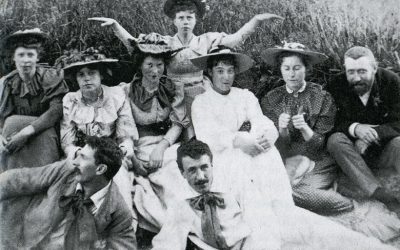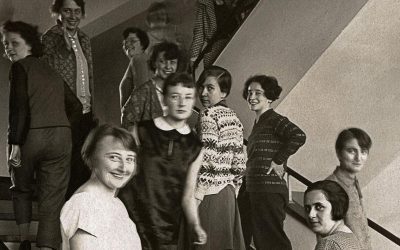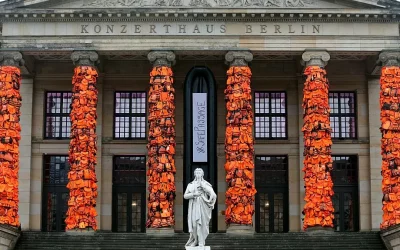In a world where injustice and inequality persist, many of us feel powerless to make a difference. We see problems all around us, but don’t know how to speak up or create change. This is where art as activism comes in, offering a powerful way to express our concerns and inspire action.
Imagine using your creativity to shine a light on important issues and move people to care. That’s exactly what art activism does. It takes the passion and skill of artists and turns them into tools for social justice.
From feminist art movements to eco-feminist art practices, artists are using their talents to challenge the status quo. They’re creating works that make us think, feel, and want to act. Whether it’s a striking mural, a thought-provoking sculpture, or a digital campaign, art has the power to reach people in ways that words alone can’t.
But you might be wondering, “How can I use my art to make a difference?” Don’t worry – you don’t need to be a famous artist to get involved. This blog post will show you how to use your creativity to drive social change, no matter your skill level or preferred medium. Get ready to discover how you can turn your passion for art into a force for good in the world.
The Power of Feminist Art Movements
Feminist art movements have been a game-changer in the art world since the 1960s. These bold artists didn’t just want to create pretty pictures – they wanted to shake things up and make people think. They fought for equal rights and recognition for women artists, who had been left out of the spotlight for far too long. By tackling tough topics like discrimination and unfair treatment, feminist artists used their work to spark important conversations and push for real change.
These movements didn’t just stick to traditional art forms. They embraced new ways of creating, like using textiles, performance, and video. This opened up a whole new world of artistic expression and challenged old ideas about what “real art” should look like. Feminist artists also created their own spaces, like women’s art organisations and collectives, where they could support each other and showcase their work. Thanks to their efforts, museums and galleries today are much more likely to include art by women and other underrepresented groups. The impact of feminist art movements continues to ripple through the art world, connecting women’s voices across cultures and inspiring new generations of artists to use their creativity to fight for equality.
Intersectionality in Art Activism
Art activism isn’t just about one issue anymore. It’s about seeing how different problems connect and affect people in unique ways. This is called intersectionality. It’s a big word, but it simply means looking at how things like race, gender, and class work together to shape people’s lives. Artists are using this idea to create powerful works that speak to many issues at once.
Take the Guerrilla Girls, for example. These anonymous artists wear gorilla masks and use bold posters to call out sexism and racism in the art world. They show how being a woman and being a person of colour can create double challenges. Another artist, Nan Goldin, uses photography to shed light on LGBTQ+ rights and the AIDS crisis. By tackling multiple issues, these artists help us see the bigger picture of inequality. They’re not just making pretty things – they’re starting important conversations and giving a voice to people who are often ignored. This kind of art helps us understand complex problems and imagine new solutions.
Challenging Norms Through Visual Expression
Art has a special power to shake up how we see the world. Artists are using this power to challenge old ideas about beauty, gender, and society. They’re not just painting pretty pictures – they’re making us think and feel in new ways. For example, some artists are celebrating all kinds of body types in their work. They show that beauty comes in many shapes and sizes, not just what we see in magazines.
Surrealist artists like Salvador Dalí used weird, dream-like images to point out problems in society. They mixed up familiar things in strange ways to make us question what we think is normal. Today, artists are still using creative tricks to challenge norms. Some use street art to spread messages about social issues to lots of people. Others use photography to show beauty in unexpected places or people. By pushing boundaries and offering new perspectives, these artists help us see the world differently. They encourage us to think about why we believe certain things and to consider other viewpoints. This kind of art doesn’t just hang on walls – it can change how we think and act in the real world.
Creating Inclusive Spaces in the Art World
The art world is changing, and it’s about time! Galleries and museums are working hard to make room for everyone. They’re putting more women’s art on display and giving LGBTQ+ artists a chance to shine. It’s not just about hanging different pictures on the wall. It’s about making sure all kinds of people feel welcome and see themselves represented in art spaces.
But it’s not just about who gets to show their art. It’s also about who gets to decide what art is shown. Museums are hiring more diverse curators to bring fresh ideas to exhibitions. They’re also reaching out to local communities, asking what kind of art they want to see. And they’re making art education more accessible, with online classes and programs for underserved areas. All these efforts are making the art world a more colourful and exciting place for everyone.
Art as a Tool for Political and Environmental Change
Art isn’t just pretty pictures – it’s a powerful way to speak up about important issues. Artists are using their creativity to tackle big problems like climate change and human rights. They’re painting huge murals on city walls, creating eye-catching posters for protests, and even using social media to spread their messages far and wide. For example, some artists are making beautiful things out of recycled materials to show how we can be kinder to our planet.
The digital world has opened up new ways for artists to make a difference. They can share their work instantly with millions of people online. Some are creating interactive websites or virtual reality experiences to help people understand complex issues. Others are using digital billboards to remind us about urgent problems like global warming. By using art in these clever ways, artists are helping us see the world’s challenges in new ways and inspiring us to take action.
Community Engagement and Social Healing
Art isn’t just for hanging on walls – it’s a powerful tool for bringing people together and healing communities. Artists are using their skills to tackle tough social issues and help people feel better. For example, art therapy programs are popping up to help folks deal with stress and trauma. These programs use creative activities to start conversations about difficult topics in a way that feels safe and fun.
Community art projects are also making a big splash. Imagine a whole neighbourhood coming together to paint a giant mural that tells their story. That’s the kind of thing happening in places like Philadelphia, where the Mural Arts Program is using art to solve local problems and bring people closer. These projects give a voice to people who often feel ignored, like minority groups or those living in poor areas. By creating art together, communities can heal old wounds, celebrate their strengths, and build bridges between different groups. It’s amazing how something as simple as painting or singing together can make such a big difference in people’s lives.
Reclaiming Cultural Narratives is an important aspect of art activism that focuses on empowering marginalised communities to tell their own stories and challenge dominant historical and cultural narratives. Here’s an overview of this concept:
## Decolonizing Art Institutions
Many artists and activists are working to decolonize art institutions:
– Challenging Eurocentric perspectives in museums and galleries
– Advocating for the return of cultural artefacts to their countries of origin
– Promoting diverse curatorial practices that include multiple cultural viewpoints
For example, museums are increasingly reconsidering how they display and interpret cultural artefacts, and some are returning items to their original communities.
Supporting Refugee Artists
There’s a growing movement to support and showcase the work of refugee artists:
– Creating platforms for refugee artists to share their experiences and perspectives
– Using art as a means of cultural preservation for displaced communities
– Challenging stereotypes about refugees through artistic expression
Organisations like Refugee Art Project provide resources and exhibition opportunities for artists from refugee backgrounds.
Preserving Diverse Cultural Expressions
Artists are working to preserve and celebrate diverse cultural traditions:
– Reviving traditional art forms and techniques
– Incorporating indigenous knowledge and practices into contemporary art
– Using art to document and share endangered languages and customs
For instance, many indigenous artists are combining traditional techniques with modern materials to create works that speak to both their cultural heritage and contemporary issues.
Rewriting Historical Narratives
Art is being used to challenge and rewrite historical narratives:
– Creating works that highlight overlooked or suppressed historical events
– Using art to tell stories from perspectives that have been historically marginalised
– Challenging colonial and imperialist narratives through visual storytelling
Artists like Kara Walker use their work to confront and reframe historical narratives about race and power in America.
By reclaiming cultural narratives through art, marginalised communities can assert their identities, challenge stereotypes, and contribute to a more inclusive and diverse cultural landscape. This process not only empowers these communities but also enriches our collective understanding of history and culture.
Art has the power to change the world, and now you have the tools to be part of that change. Whether you’re painting, taking photos, or creating digital art, your voice matters. Don’t be afraid to tackle tough issues or show the world from a new angle. Remember, every big movement started with one person speaking up.
You can make a difference in your community through art. Try organizing a mural project, hosting an inclusive art show, or teaching art to kids who might not otherwise have the chance. Your creativity can bring people together and help heal wounds we can’t always see.
If you’re feeling inspired and want to learn more about using art for social change, don’t hesitate to reach out. You can email me at info@semrajelil.com for more ideas and support. Let’s make the art world a place where everyone’s story can be told and heard.
FAQs:
1. Q: What is art activism?
A: Art activism is using creative works to raise awareness about social issues and inspire change.
2. Q: How can I start making activist art?
A: Start by choosing an issue you care about and exploring ways to express it through your preferred art form.
3. Q: Do I need to be a professional artist to make a difference?
A: No, anyone can create art that matters. What’s important is your message and passion.
4. Q: What are some easy ways to make my art more inclusive?
A: Include diverse subjects in your work, collaborate with artists from different backgrounds, and make your art accessible to various communities.
5. Q: How can digital art be used for activism?
A: Digital art can be shared widely on social media, used in online campaigns, or displayed on digital billboards to reach large audiences.
6. Q: What is eco-feminist art?
A: Eco-feminist art combines environmental concerns with feminist perspectives, often using sustainable materials to create art about nature and women’s experiences.
7. Q: How can art help heal communities?
A: Community art projects can bring people together, provide a way to process shared experiences, and create a sense of belonging.
8. Q: What is intersectionality in art activism?
A: Intersectionality in art activism means addressing multiple social issues at once, recognizing how different forms of discrimination can overlap.
9. Q: How can I make my art more accessible to people with disabilities?
A: Consider using multi-sensory elements, providing audio descriptions, or creating tactile versions of your work.
10. Q: Can protest art really make a difference?
A: Yes, protest art can raise awareness, spark conversations, and inspire people to take action on important issues.




0 Comments